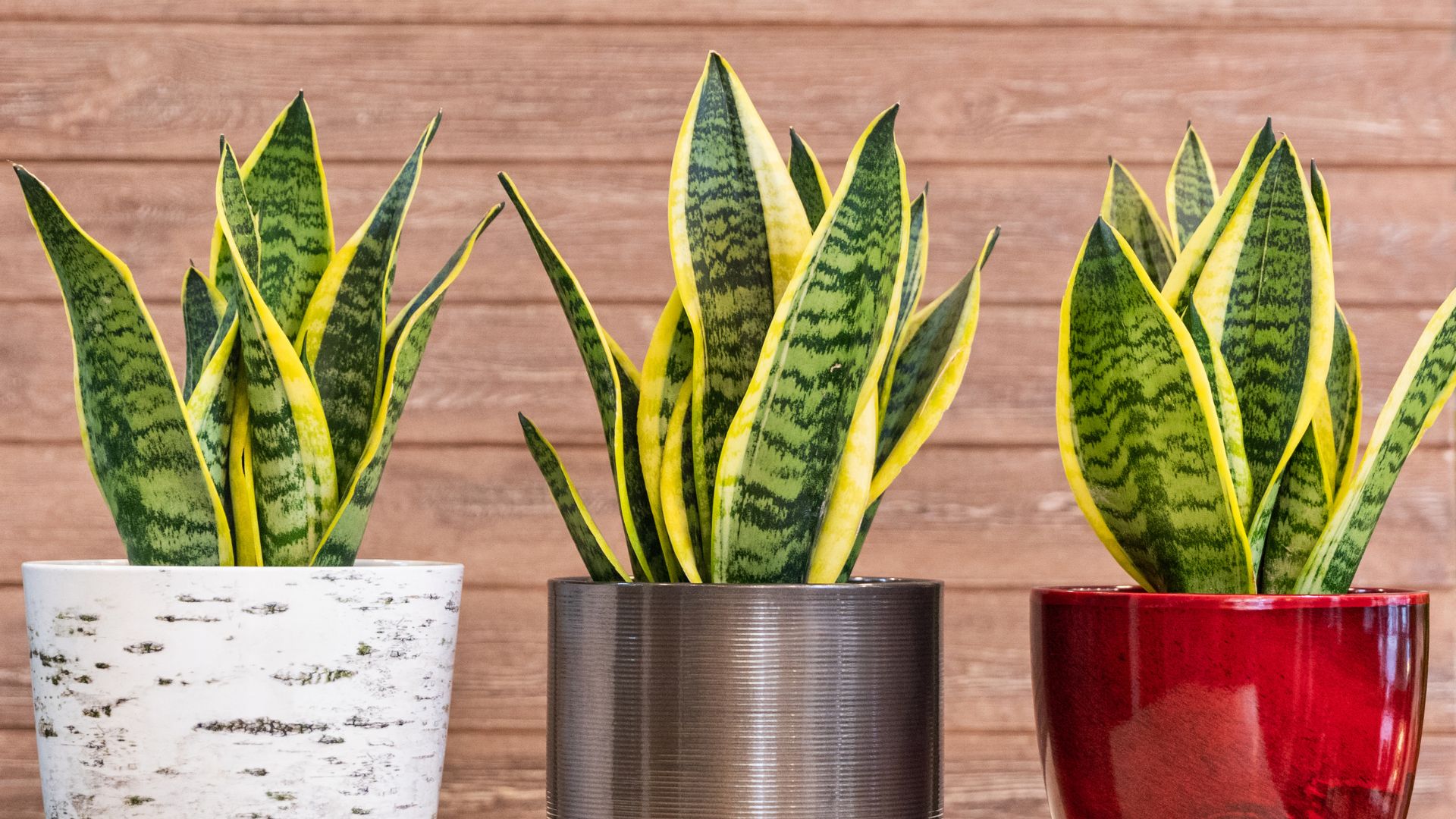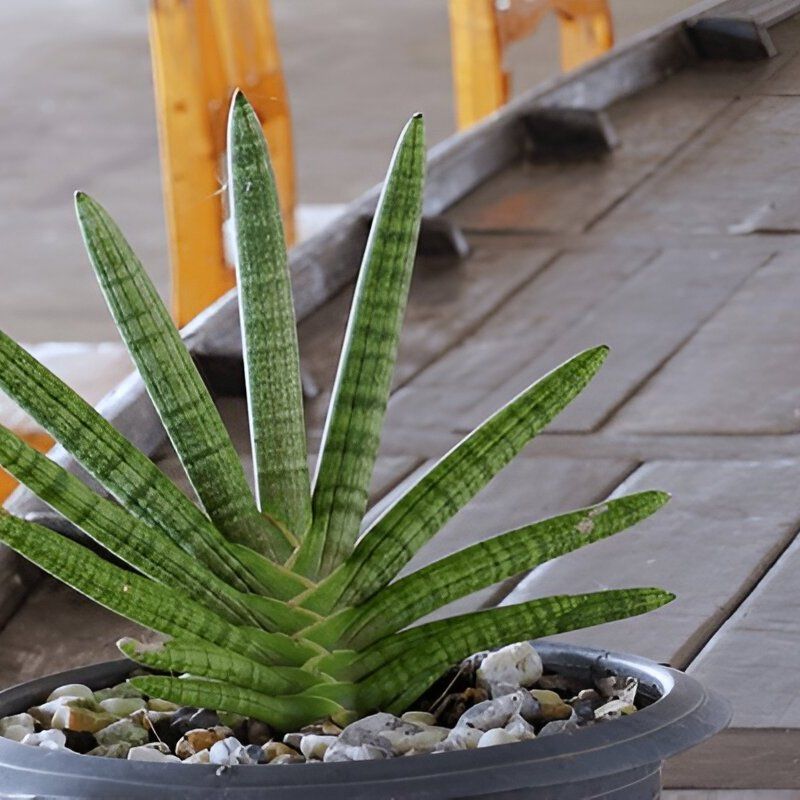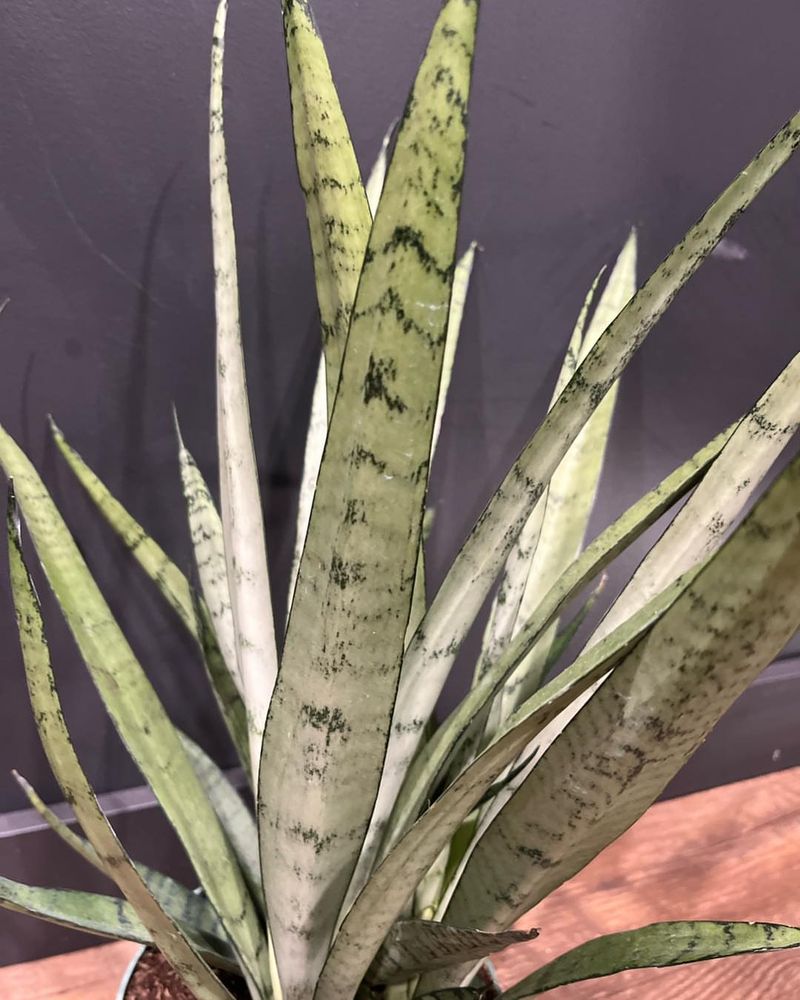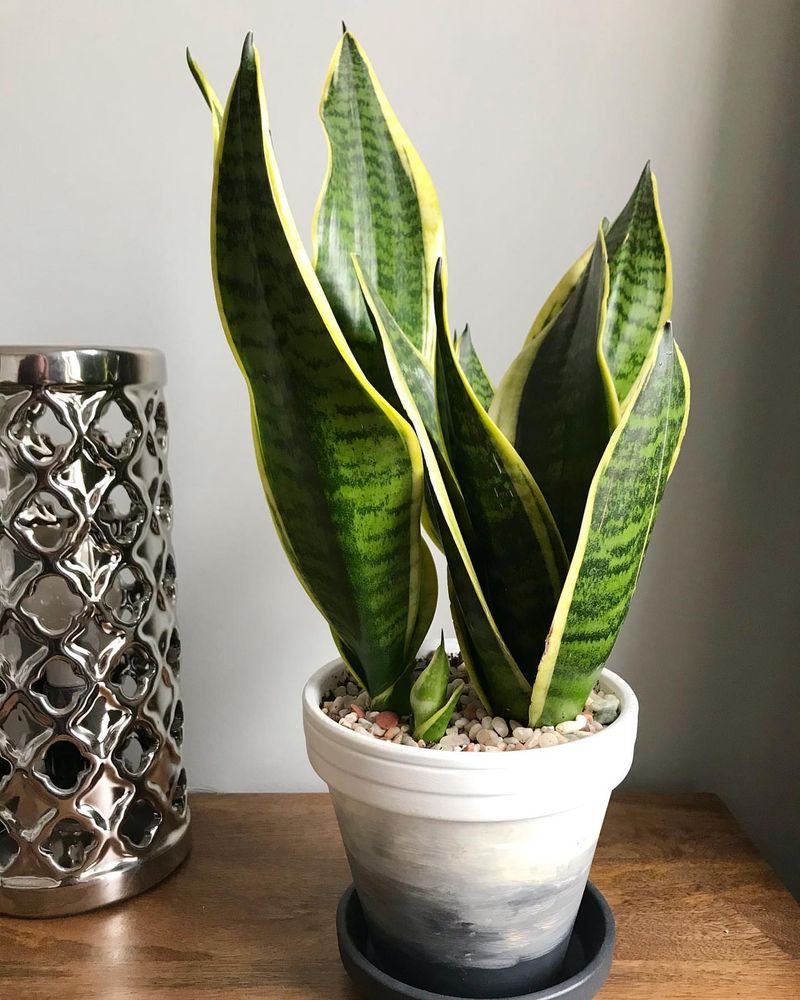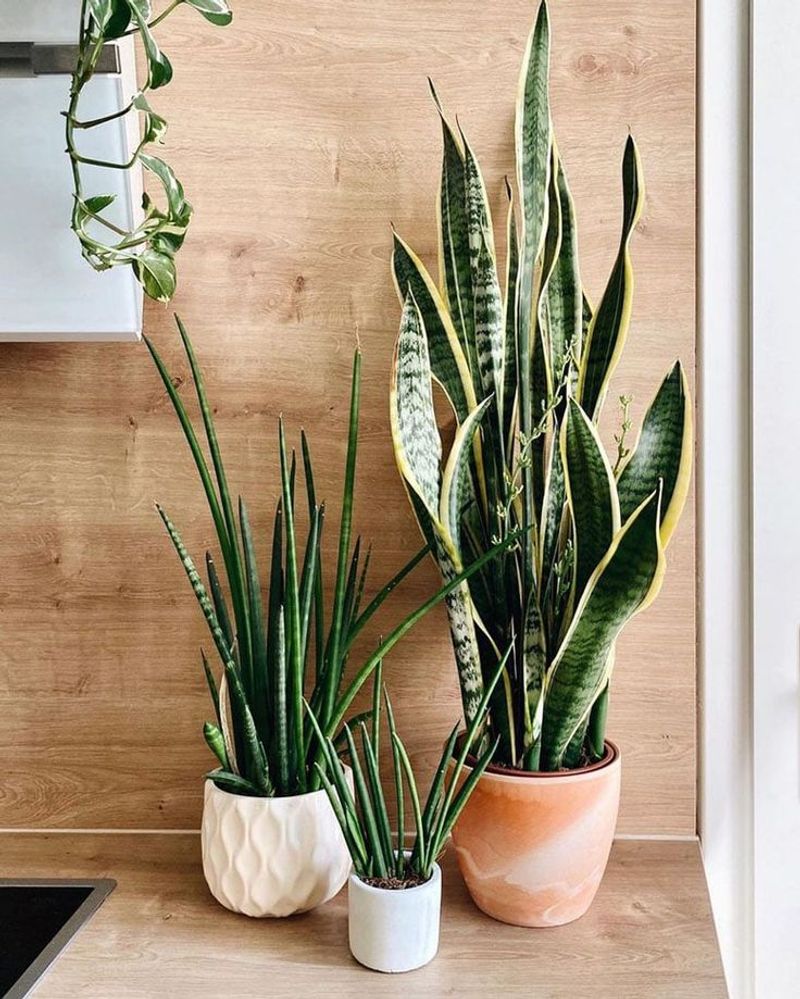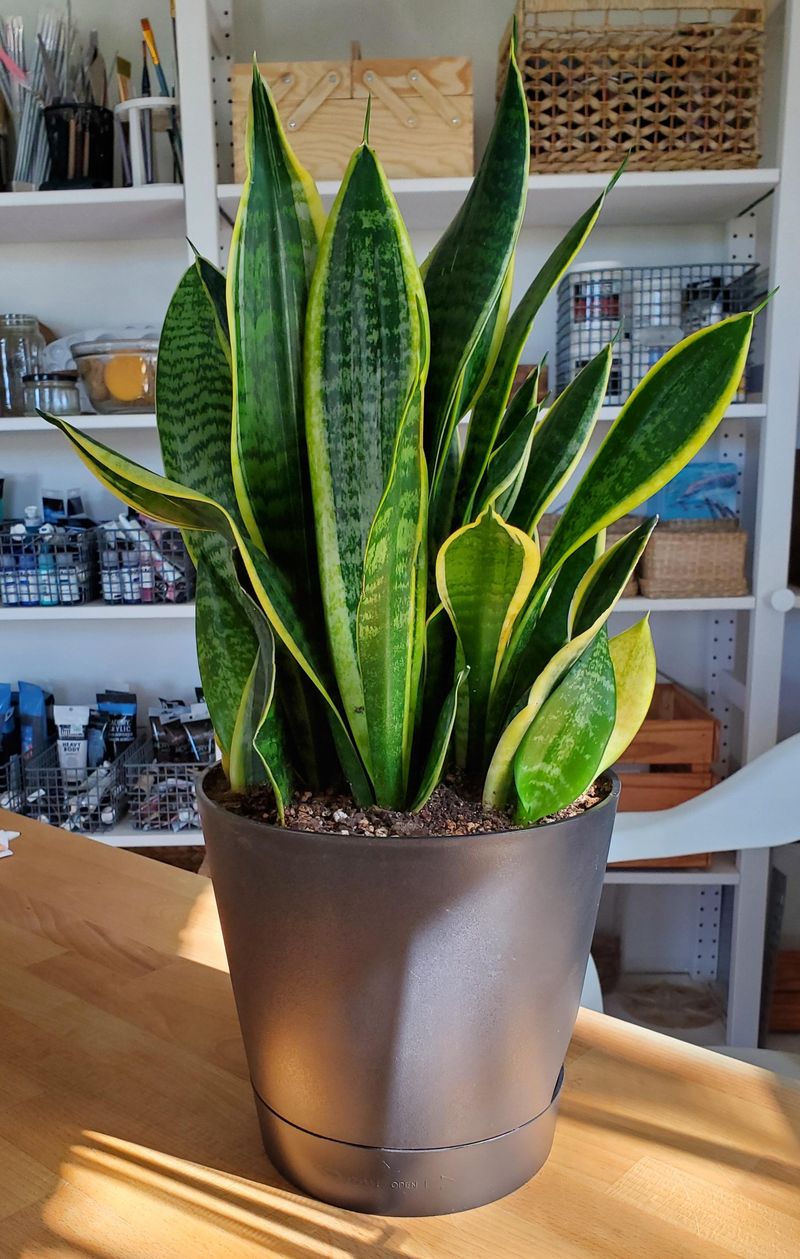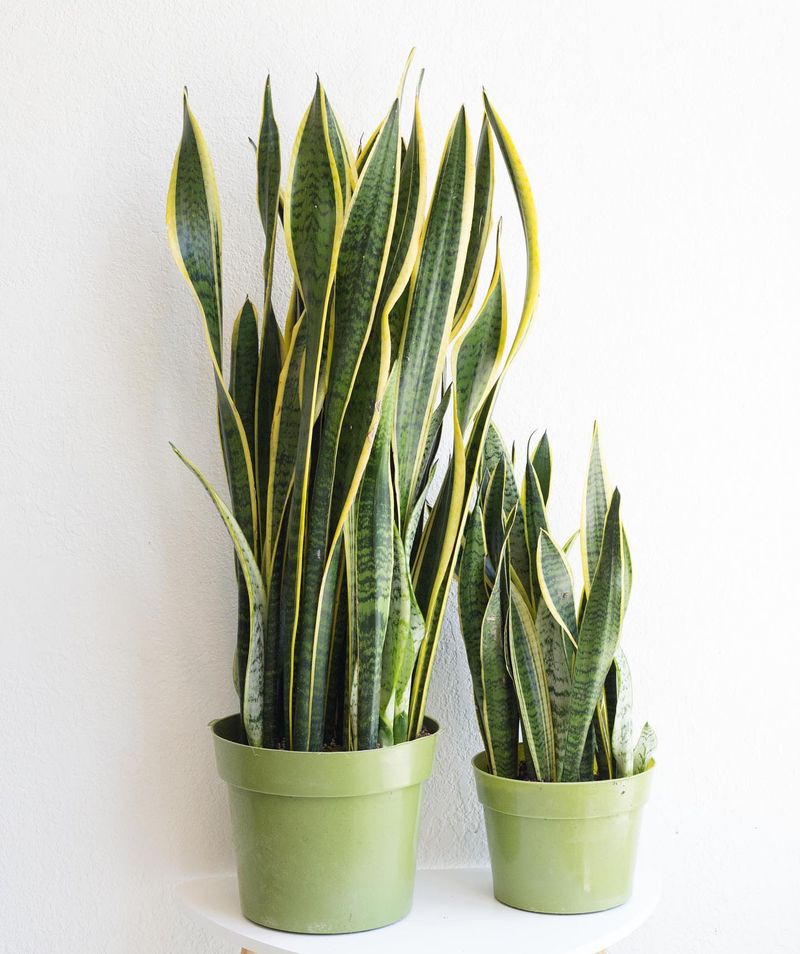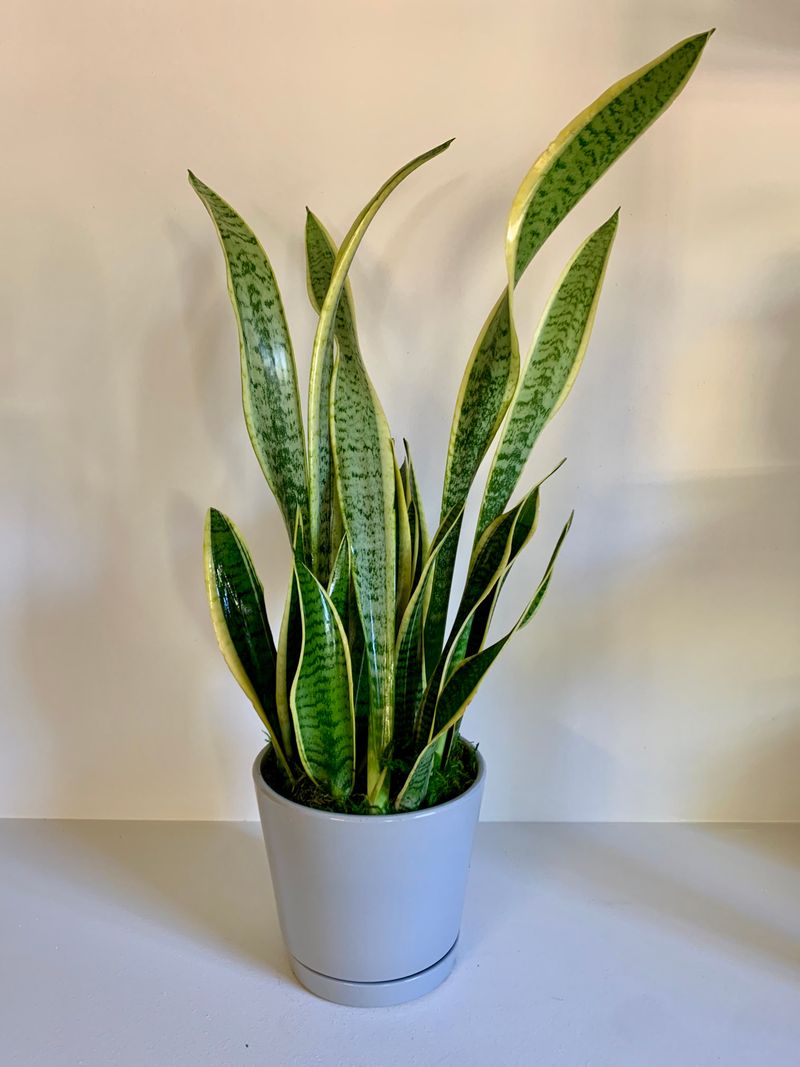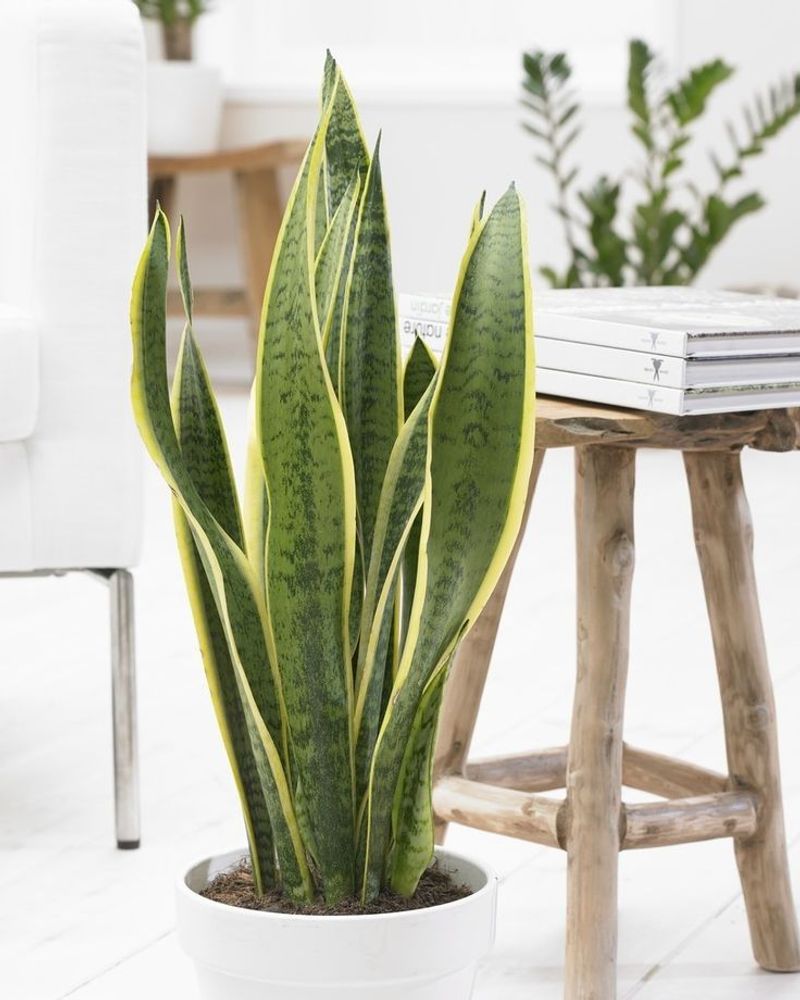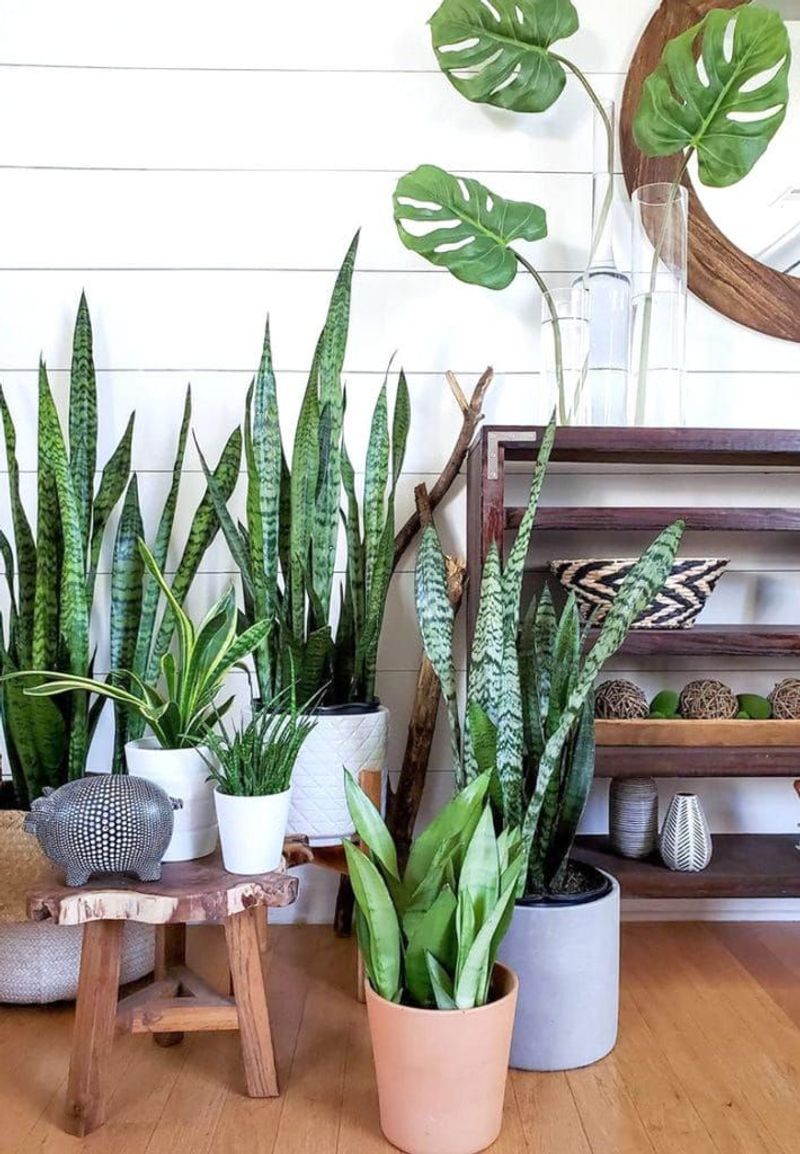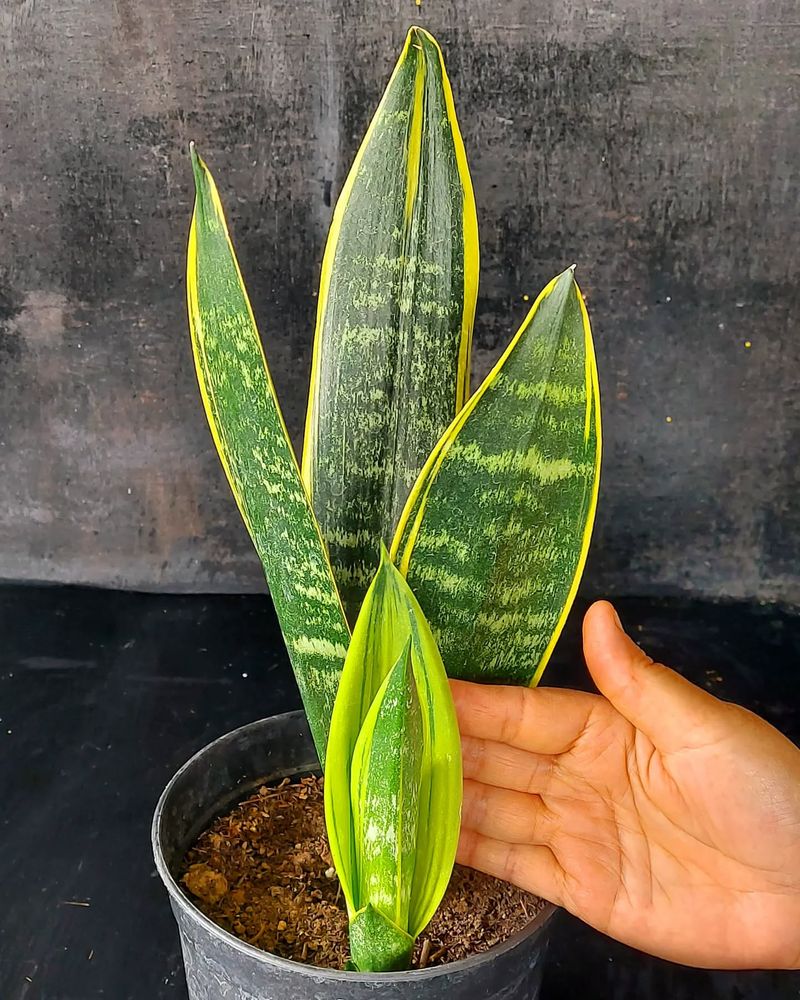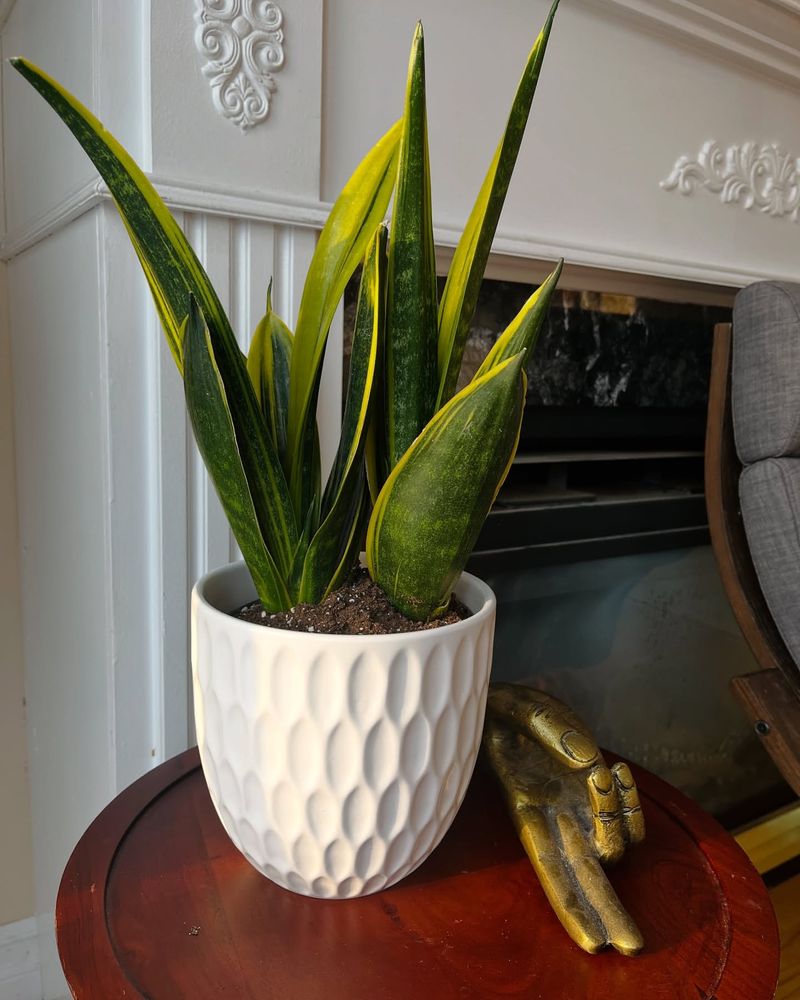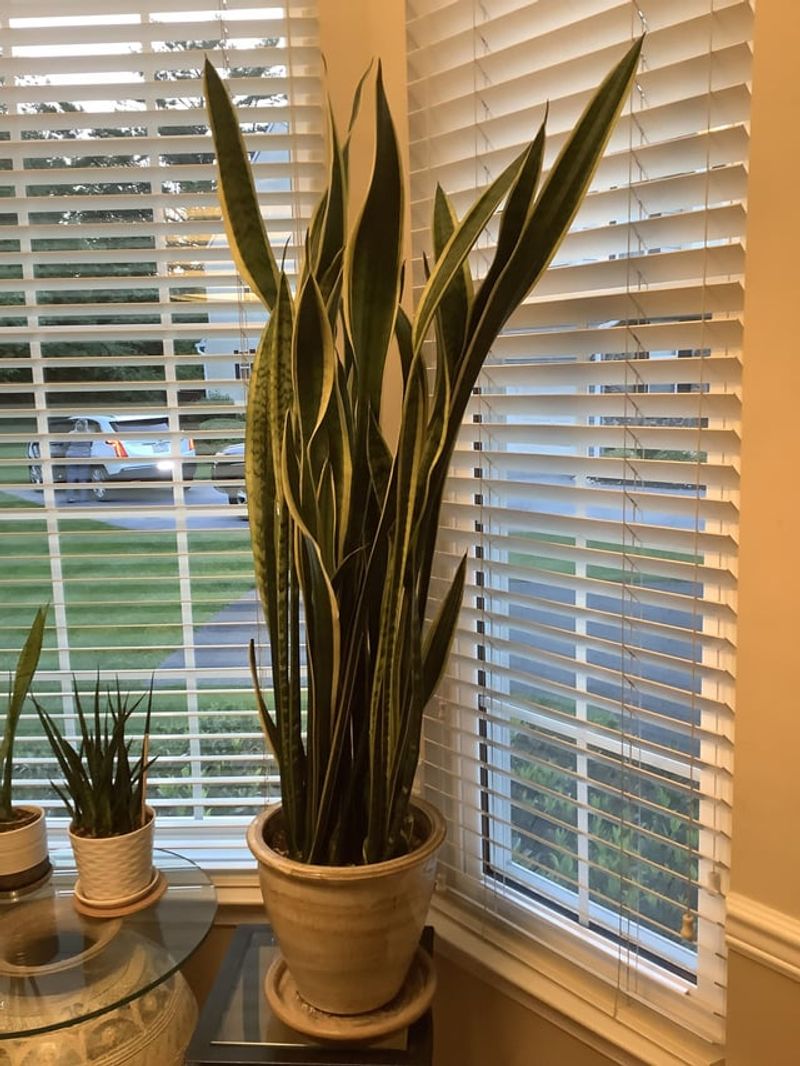Winter in Montana can be brutal on houseplants, with dry indoor air and short daylight hours making plant parenthood a challenge. I’ve forgotten to water mine for weeks during busy ranch seasons, yet one resilient green friend keeps thriving despite my neglect.
The Snake Plant (Sansevieria) has become Montana’s unofficial houseplant hero. From what I’ve seen in friends’ homes across Billings and Missoula, this upright beauty withstands everything from sporadic watering to temperature fluctuations common in our drafty mountain cabins.
Whether you’re juggling long work hours at the ski resort or traveling during harsh winter months, here’s why this particular plant continues to flourish in Montana homes when others surrender to our unique growing conditions.
1. Drought-Resistant Superstar
Native to arid African regions, the Snake Plant stores water in its thick leaves similar to how cacti survive. This evolutionary adaptation makes it perfectly suited for Montana’s dry indoor heating season.
During winter months when humidity drops below 30% in most Montana homes, other plants crisp up while the Snake Plant keeps its composure. You can literally forget to water it for a month, and it’ll forgive your negligence without dropping leaves or showing stress.
2. Thrives In Montana’s Low Light Winters
Those short December days in Montana when the sun barely peeks over the mountains don’t phase this resilient plant. Snake Plants need minimal light to photosynthesize compared to other houseplants.
Many Bozeman residents place them in north-facing windows or dimly lit corners where other plants would slowly wither.
While not completely immune to darkness, they’ll maintain their striking appearance with just occasional indirect light – perfect for those four-month Montana winters.
3. Handles Temperature Fluctuations Like A Champ
Montana’s famous temperature swings don’t disturb the Snake Plant’s zen-like composure. When the wood stove blazes during a Helena snowstorm then cools overnight, most plants suffer shock.
Snake Plants maintain their cool whether it’s 60°F or 85°F indoors. Their desert heritage prepared them for precisely these conditions.
I’ve seen them survive near drafty windows in Whitefish cabins where temperatures drop significantly at night – a true testament to their adaptability in our mountain climate.
4. Natural Air Purifier For Sealed Winter Homes
During Montana’s extended indoor season, Snake Plants work overtime purifying air. NASA studies confirm they remove toxins like formaldehyde and benzene while releasing oxygen at night – unlike most plants.
For Montana families who seal homes tight against sub-zero temperatures, this natural air-cleaning ability proves invaluable.
Many Missoula residents report better sleep with Snake Plants in bedrooms during winter months when windows remain closed for weeks on end.
5. Pest-Resistant When Other Plants Succumb
Montana’s indoor heating season creates perfect conditions for spider mites and other houseplant pests. While your ferns and ivies might become infested, Snake Plants typically remain untouched.
Their thick, waxy leaves naturally repel most common houseplant invaders. Big Sky Country gardeners often place Snake Plants as “bodyguards” near more susceptible plants.
This resistance means less time spraying neem oil and more time enjoying Montana’s outdoor recreation without plant-sitting worries.
6. Forgives Inconsistent Watering Schedules
Ranching families across Montana’s eastern plains appreciate plants that don’t demand weekly attention. Snake Plants forgive sporadic care during calving season or summer haying when outdoor work takes priority.
Their specialized metabolism allows them to close leaf pores during drought, conserving moisture for weeks. Many Livingston residents water theirs just once monthly during winter.
This tolerance for neglect matches perfectly with Montana’s work-hard, play-hard lifestyle where regular plant care often falls to the bottom of priority lists.
7. Survives Montana’s Hard Water Without Complaint
Many Montana communities have mineral-rich water that leaves deposits on plant leaves and builds up in soil. Most houseplants develop brown tips and stunted growth from these minerals.
Snake Plants shrug off hard water issues that plague other species. Their robust constitution processes minerals differently, avoiding the leaf burn common to more sensitive plants.
Gardeners in Butte and Great Falls particularly value this tolerance, as their municipal water can be especially challenging for typical houseplants.
8. Grows Slowly, Requiring Less Repotting
Montana’s short growing season extends to indoor plants too. Snake Plants grow deliberately, often staying happily pot-bound for years without complaint.
This slow growth pattern means less maintenance for busy Montanans who’d rather be hiking the Beartooth Mountains than repotting plants.
Many specimens in Kalispell homes have remained in the same containers for 3+ years, gradually developing more dramatic vertical presence without outgrowing their space or requiring constant soil refreshment.
9. Withstands Dry Air Without Humidifiers
Forced-air heating systems in Montana homes can drop humidity to desert-like levels during winter. While tropical plants demand humidifiers or constant misting, Snake Plants thrive without special humidity considerations.
Their African heritage prepared them for precisely these arid conditions. Montana gardeners appreciate skipping the humidifier routine that other houseplants demand.
Even in Havre, where winter indoor humidity can drop below 20%, Snake Plants maintain their structural integrity and vibrant coloration without additional moisture support.
10. Perfect For Montana Vacation Homes
Second homes near Flathead Lake or Big Sky Resort often sit empty for weeks or months. Snake Plants become the default choice for these intermittently occupied spaces.
When Montanans return to vacation properties after long absences, they find their Snake Plants standing tall despite total neglect. Their ability to enter a semi-dormant state during adverse conditions makes them ideal sentinels for seasonal properties.
Unlike fussier plants that punish inconsistent care with dramatic wilting or death, these resilient beauties maintain their composure.
11. Tolerates Montana’s Mineral-Rich Soil
Montana’s native soils contain unique mineral profiles that can challenge houseplants when used in potting mixes. Snake Plants adapt to various soil compositions without developing nutrient deficiencies that plague fussier species.
Gardeners in Billings and Miles City often incorporate local soil components into houseplant mixtures with disastrous results for most plants. Snake Plants, however, adapt readily to these mineral-rich blends.
Their flexible root systems efficiently extract what they need while avoiding toxicity issues that would kill less adaptable houseplants.
12. Vertical Growth Perfect For Small Montana Spaces
Many Montana homes feature smaller rooms with limited floor space, especially in historic mining towns like Butte or Virginia City. Snake Plants grow upward rather than outward, utilizing vertical space efficiently.
Their architectural form creates dramatic height without demanding wide berth. During Montana winters when outdoor activities get curtailed, indoor space becomes premium real estate.
These space-efficient plants provide greenery without cluttering living areas, making them ideal for compact cabins where every square foot counts.
13. Allergen-Free For Montana’s Extended Indoor Season
Montana’s long winters mean more time spent indoors, making air quality crucial. Snake Plants produce no pollen or strong fragrances that trigger seasonal allergies or sensitivities.
For Montana families already contending with wood smoke and forced-air heating irritants, this hypoallergenic quality proves invaluable.
While flowering houseplants may exacerbate respiratory issues during Montana’s extended indoor months, Snake Plants silently improve air quality without introducing additional allergens.
14. Propagates Easily In Montana’s Short Growing Season
Snake Plants readily multiply through division, allowing Montana gardeners to expand their collection despite the state’s abbreviated growing season. A single plant often produces offsets that can be separated into new specimens.
This generous propagation habit creates opportunities for plant sharing among neighbors – a cherished tradition in close-knit Montana communities.
Gardeners in Hamilton and Lewistown frequently exchange Snake Plant babies during winter months when outdoor gardening halts, maintaining their connection to growing things despite snow-covered landscapes.
15. Survives Montana Power Outages Without Damage
Winter storms frequently knock out electricity across Montana’s rural communities. While most houseplants perish during extended outages, Snake Plants endure temperature drops with remarkable resilience.
Their succulent nature provides insulation against cold, and their drought tolerance means they’re not immediately stressed by heating system failures. Many Montanans in the Bitterroot Valley report Snake Plants surviving multiple-day power outages that killed other houseplants.
This crisis-proof quality makes them particularly valuable in remote Montana locations where utility restoration can take days.

